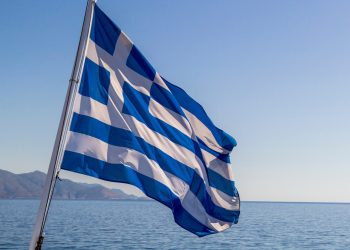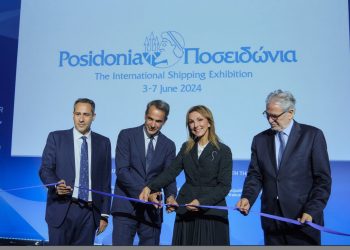20 methane and gas tankers ordered in China and South Korea
 For months the shipyards of South Korea and China have been besieged by Greek shipping companies expecting to see global demand for liquefied natural gas (LNG) and liquefied petroleum gas (LPG) rise sharply and who are therefore looking to diversify their fleets and invest in the acquisition of large methane tankers for LNG and gas ones for LPG. Experts in the shipping agencies sector (as recently noted by the Greek daily Kathimerini) estimate that over the past 10 months Greek shipping companies have ordered over 20 large methane and gas tankers from Chinese and South Korean shipyards for a total cost of about 535 million euros.
For months the shipyards of South Korea and China have been besieged by Greek shipping companies expecting to see global demand for liquefied natural gas (LNG) and liquefied petroleum gas (LPG) rise sharply and who are therefore looking to diversify their fleets and invest in the acquisition of large methane tankers for LNG and gas ones for LPG. Experts in the shipping agencies sector (as recently noted by the Greek daily Kathimerini) estimate that over the past 10 months Greek shipping companies have ordered over 20 large methane and gas tankers from Chinese and South Korean shipyards for a total cost of about 535 million euros.
If one factors in the option for possible extra orders that the shipping companies may make, the number of ships rises to 30 and the overall investment to about 687 million euros. Among the Greek shipping companies who have chosen to boost their fleets with the new carriers of liquefied gases there is the Angelicoussis group, the Logothetidis family and the Vafias group. The orders have for the most part been placed with the South Korean shipyards Hyundai and Daewoo and the Chinese ones Guangzhou Wenchong and Cosco – the latter mostly for container ships and ones for the transport of dry cargo.
According to the statistics collected and released by the Greek shipping agency George Moundreas, in the 2010-2011 period Greek freight agents placed 347 orders for the building of new units, including 171 dry cargo transport ships, 48 tankers, 44 container ships, 29 methane tankers and four rigs for oil extraction and processing. The same figures show that over the past two years shipping companies have shown themselves to be more likely to purchase container ships and methane tankers: while in 2010 only 9 container ships were ordered last year the number of orders for this type of carrier rose to 45, and the number of methane tankers grew from 2 in 2010 to 25 in 2011. This year as of mid-March, five orders had already been placed for methane tankers and more are expected in the coming months. The delivery of the ships ordered is expected to take place by 2015, unless the financial crisis obliges the cancellation of some of the orders already placed. Over the past few years the programmes of Greek shipping companies led to the building of 611 ships with total capacity of 57.9 million deadweight tonnes (DWT).
Generally South Korean and Chinese shipyards are prefered, but many units have been built also in Japan, India and the Philippines. But why are Greek shipping companies using foreign shipyards and not national ones any longer (such as the Perama one in Piraeus, the Skaramangas one 10 kilometres from Athens or the Elefsine one north of the capital), which were once renowned for the excellent quality of the ships produced? Greek shipping companies could have chosen local shipyards at least for the building of smaller ships or for large-scale repairs and modifications. There are three main reasons (according to the Union of Greek Ship-owners, the EEE) why they no longer opt for Greek shipbuilders: the costs are too high for repairs, delivery dates tend not to be complied with and there are too many interruptions in the sector’s activities due to ”strikes and protests in the shipyards and repair workshops called by unions”.
Source: ANSA





























































